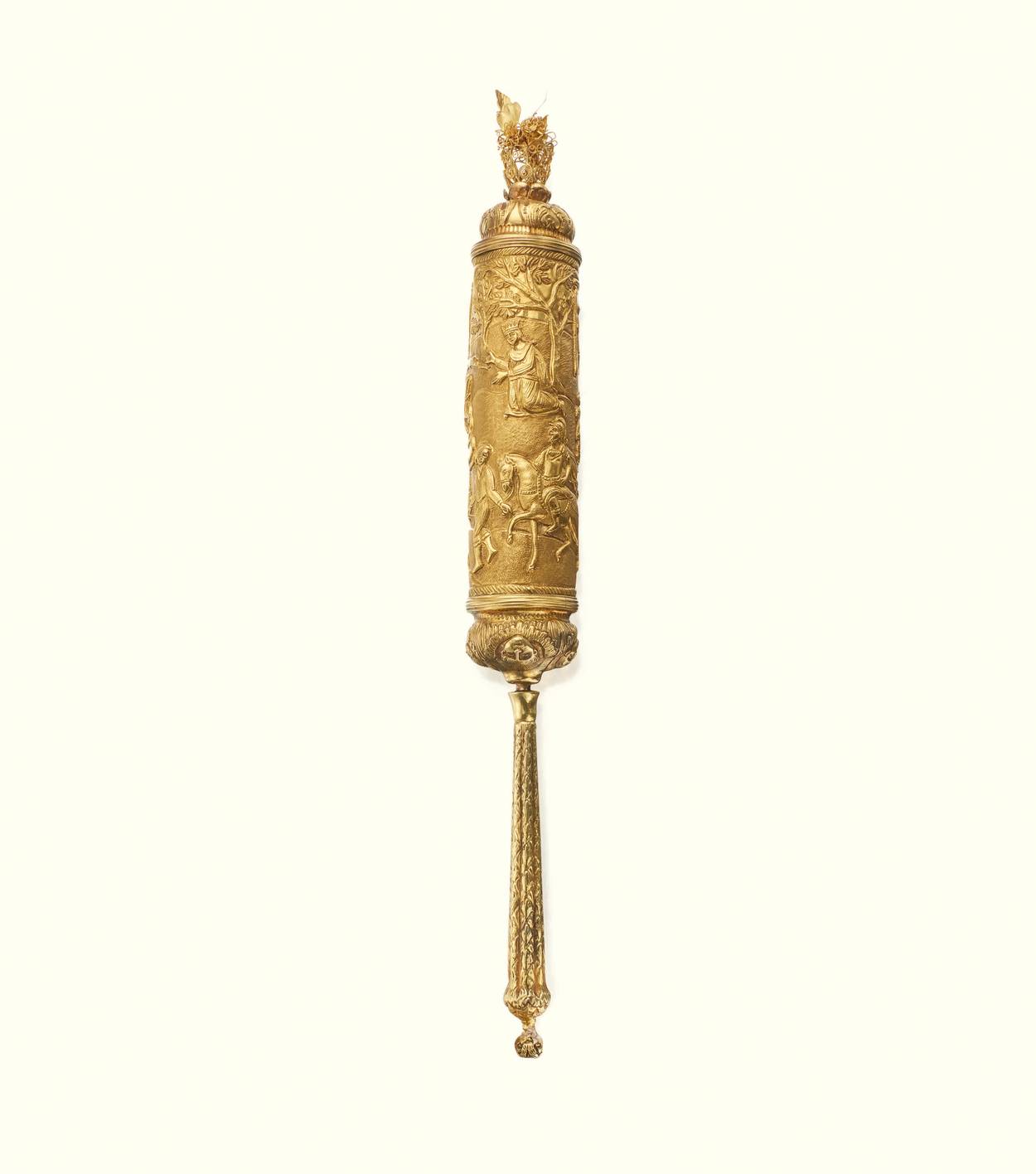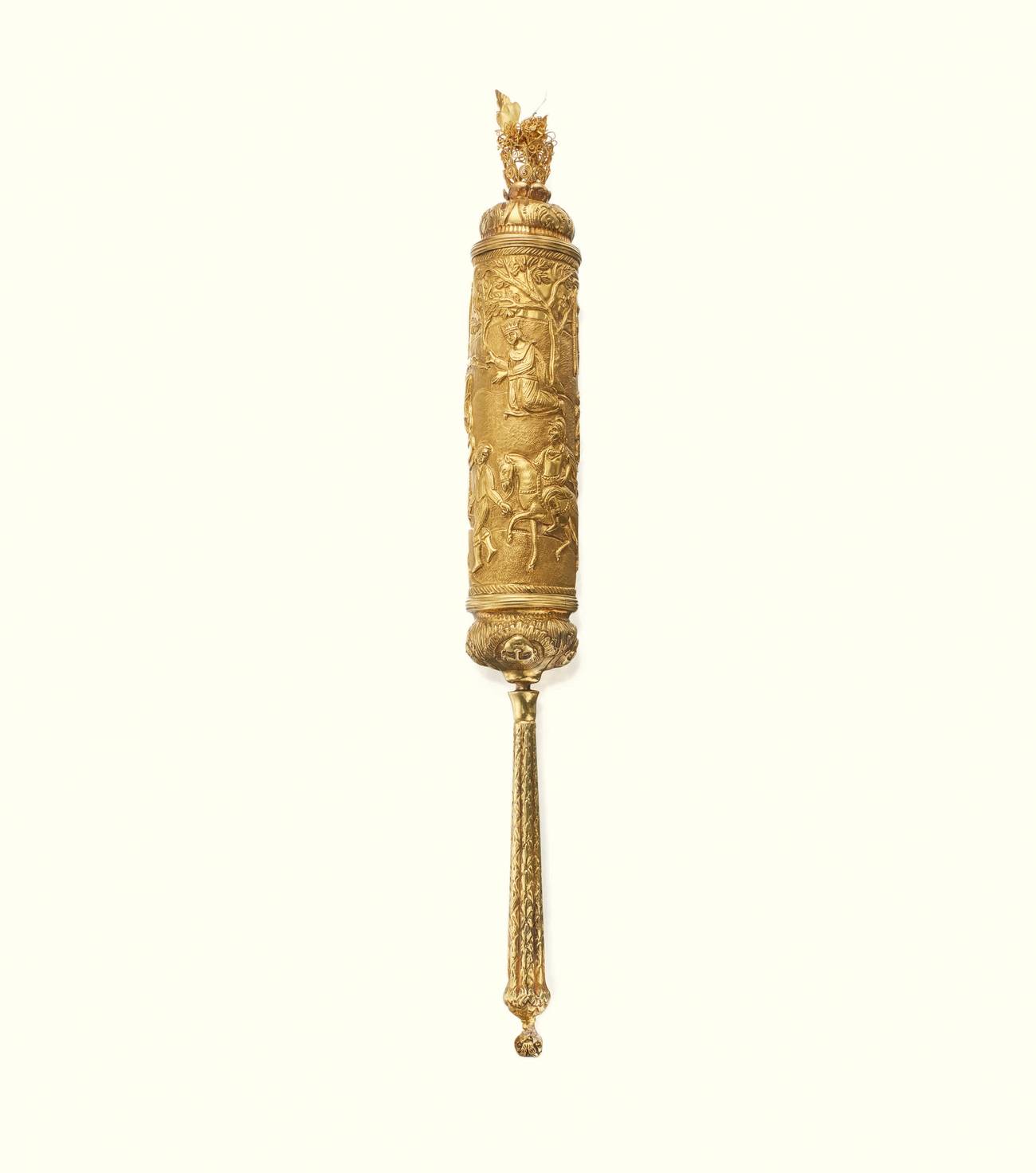The Sassoon Family Collection
A Sotheby’s curator describes an important sale of Judaica from ‘The Rothschilds of the East,’ who dominated the opium and cotton trades in the Persian Gulf, India, Southeast Asia, China, and Japan




The silver ritual objects, manuscripts, and textiles featured in the upcoming auction, Sassoon: A Golden Legacy, to be held at Sotheby’s in New York on Dec. 17, were assembled by members of the fabled Sassoon family—also known as the “Rothschilds of the East”—over the course of more than a century. The provenance of the items on sale ranges geographically from Western Europe to the Far East and chronologically from the 11th to the 20th centuries.
The patriarch of the Sassoon dynasty, David (1792-1864), was one of seven children born in Baghdad to his father Sassoon ben Saleh (1750-1830), a wealthy businessman who served as chief treasurer to the local Ottoman pashas and nasi (president) of the Babylonian Jewish community. Because of the practice of some Jewish families for sons to add their father’s given name to their own, David came to be known as David Sassoon, whence the surname. After receiving a traditional Jewish education, David married Hannah (Aziza) Joseph of Basra (1792-1826), who bore him four children in Baghdad; following her premature death, he wed Flora (Farha) Hayyim (1812/1814-1887), mother of 10 further daughters and sons in Bombay. In the late 1820s, persecution by Daud Pasha of Baghdad forced most of the family to leave the city and settle in Bushire (present-day Bandar Bushehr, Iran).
In 1832, having relocated to Bombay (present-day Mumbai, India), David founded a company, David Sassoon and Sons (later: David Sassoon & Co.), that quickly came to dominate the opium and cotton trades in the Persian Gulf, India, Southeast Asia, China, and Japan and, with time, expanded into numerous other commodities and fields as well, including banking and real estate. Like Mayer Amschel Rothschild before him, David dispatched his sons to important financial centers and trade posts in order to found new branches of the family business. His success and the prospect of employment by his company induced other Baghdadi Jews, including such future entrepreneurs as Ellis Kadoorie and Silas Hardoon, to immigrate to India and points farther east, sometimes helping to found new Jewish communities upon their arrival.
David Sassoon’s fourth son, Reuben (1834-1905), who grew up in India, was recognized early on as mathematically gifted, quick-witted, wise, industrious, commercially savvy, and well-mannered; it was said of him that he had no enemies. When he came of age, he was sent by his father to conduct family business first in Hong Kong, then in Shanghai, but in 1860 he was called back to Bombay. Following his father’s passing, one of his older brothers required assistance in London, and so Reuben, his family, and his widowed mother moved there in 1867. Soon after his arrival, he purchased a significant portion of the holdings of Philip Salomons (1796-1867), one of the earliest collectors of antique Judaica. To this he added beautiful and historic items from Jewish centers across Europe.
Reuben’s younger brother Solomon (1841-1894) and the latter’s wife, Flora (1856-1936), ran the Bombay offices of the family business. Following Solomon’s premature demise, Flora and her three children, Rachel (1877-1952), David (1880-1942), and Mozelle (1884-1921), immigrated to England in the early 20th century, rejoining Reuben and other members of the family who had settled there. Flora acquired much of her brother-in-law’s collection after his death and later bequeathed it to her son David.
An avid bibliophile and gifted scholar, David Solomon Sassoon would go on to assemble one of the largest and most important private libraries in Jewish history, comprising more than 1,270 Hebrew and Samaritan manuscripts, as well as a wide range of rare printed books and lithographs. With David’s passing, his son Solomon (1915-1985) inherited the collection, maintaining and adding modestly to it, as well as publishing some of its manuscript contents for the first time.
Some of the upcoming sale’s highlights include two remarkable parcel-gilt silver Torah shields, one of which was signed in 1782 by Elimelekh Tzoref of Stanislav and the other of which can be attributed to him based on its similarity to the first (lots 26 and 27). These exquisitely executed ceremonial objects incorporate numerous artistic motifs deriving from both Jewish and non-Jewish sources and constitute two of the most important pieces of early modern Judaica created by a Jewish artisan.
Two further outstanding items relate to the devotional life of the great Rabbi Joseph Chayyim of Baghdad (circa 1834-1909), leader of Iraqi Jewry and author of Sefer Ben Ish Chai: his siddur (lot 36), including several pages with his manuscript notes on the liturgy, and both Rashi and Rabbeinu Tam pairs of his tefillin (lot 37).
The slides represent a selection of items being offered as part of Sassoon: A Golden Legacy.
Shaul Seidler-Feller is a Judaica consultant in the Books & Manuscripts Department, Sotheby’s New York.